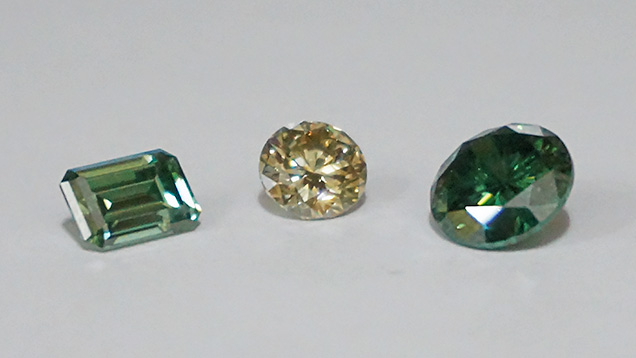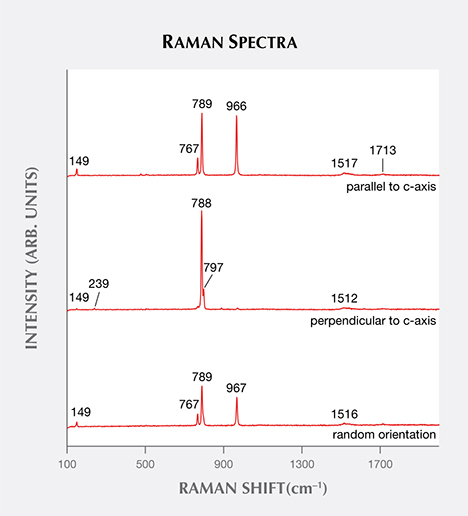Synthetic Moissanite Imitations of Synthetic Colored Diamonds

Three faceted specimens were recently submitted to the Earth Science and Resources College of Chang’an University by a client who acquired them as synthetic colored diamonds (figure 1). All three specimens were relatively clean to the unaided eye. The RI of the specimens was over the limit of the gem refractometer. The average hydrostatic SG value was 3.21, and all samples were inert under long-wave and short-wave UV radiation. Microscopic examination revealed clear doubling of numerous stringers and some needle-like inclusions (figure 2). All of these features were consistent with synthetic moissanite (K. Nassau et al., “Synthetic moissanite: A new diamond substitute,” Winter 1997 G&G, pp. 260–275). Raman spectra of the samples were obtained using 785 nm laser excitation from three different orientations: parallel to the c-axis, perpendicular to the c-axis, and random orientation (one specimen’s spectra is shown in figure 3). Results for all three samples indicated synthetic moissanite, with the peaks at 149, 767, 789, and 967 cm–1 obtained from the random orientation (see rruff.info).


Moissanite (silicon carbide, or SiC) has many polytype structures, including cubic (C), hexagonal (H), and rhombohedral (R). Hexagonal structure 4H-SiC and 6H-SiC (space group P63mc) are the most common polytypes used as gem material. In this study, the characteristic peaks at 149, 767, 789, and 966 cm–1, obtained from the orientation parallel to the c-axis, were consistent with those previously reported for 6H-SiC (S. Nakashima and H. Harima, “Raman investigation of SiC polytypes,” Physica Status Solidi A, Vol. 162, No. 1, 1997, pp. 39–64).
High-quality colorless and black synthetic moissanites are common diamond imitations in the jewelry trade. As the growth techniques of synthetic moissanite continue to improve and the popularity of fancy-color diamonds increases in the Chinese market, we anticipate that high-quality synthetic colored moissanite will become more prevalent.
.jpg)


